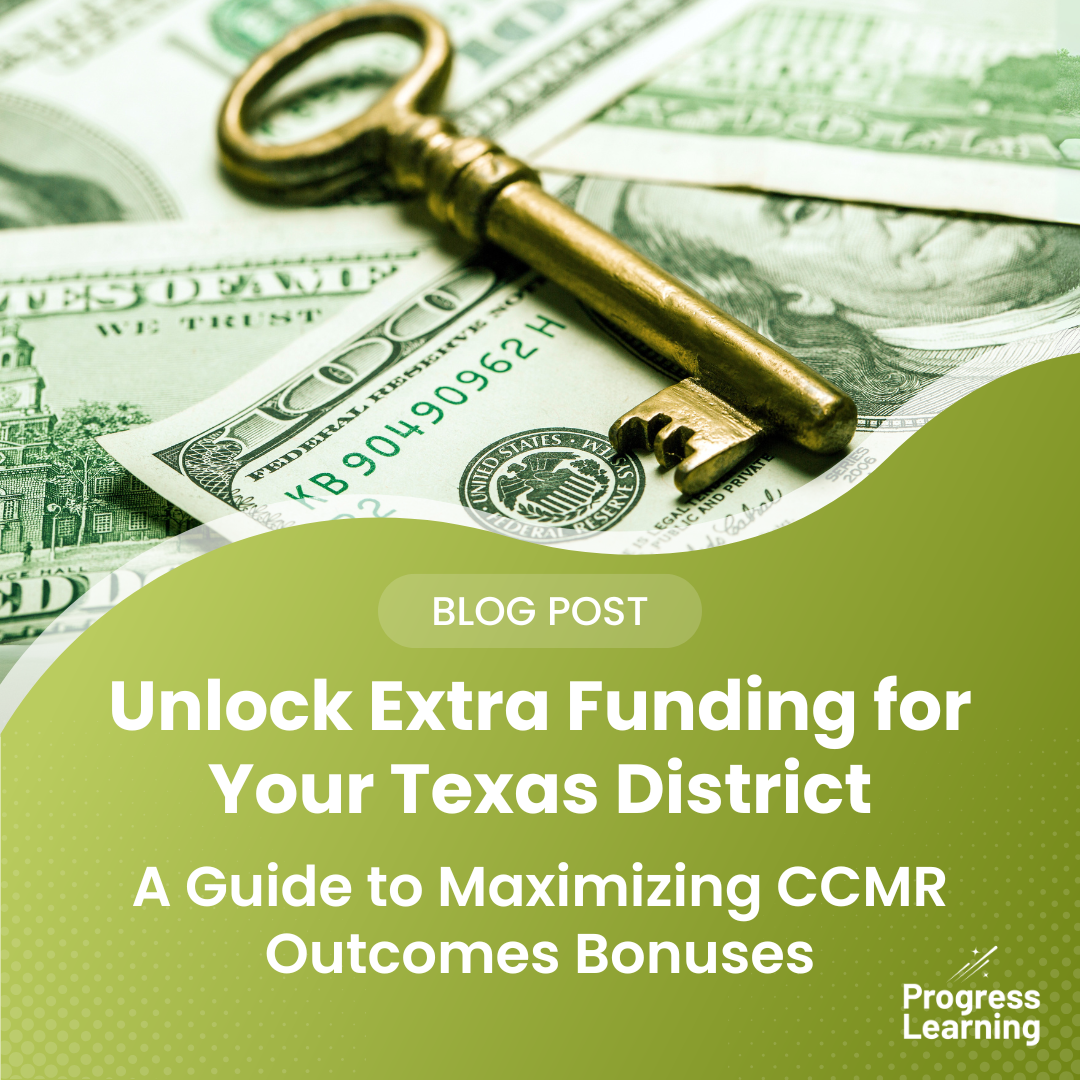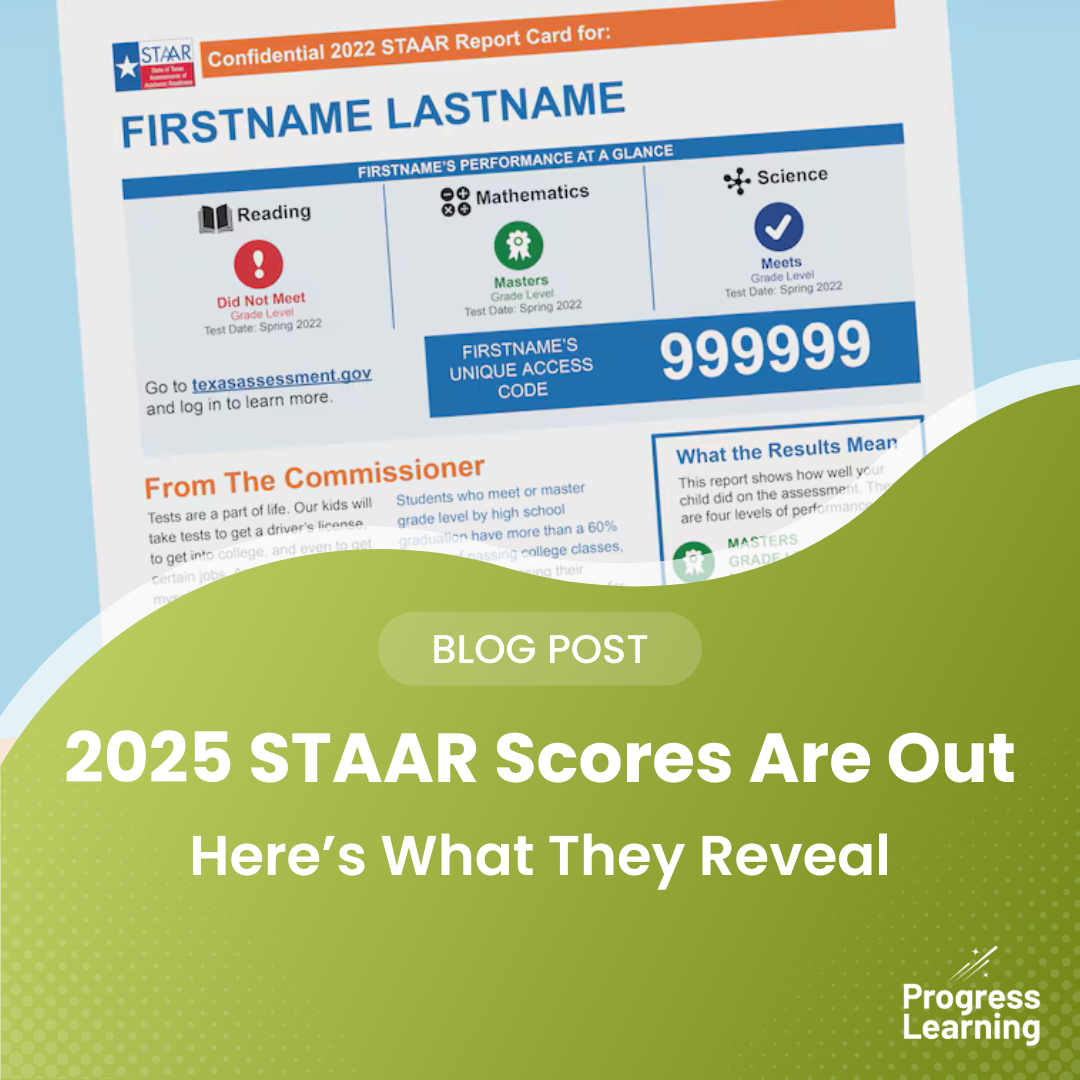STAAR Question Stems – How to Help Your Students Prepare
The STAAR® (State of Texas Assessments of Academic Readiness) exam includes specific question stems that students will encounter across grade levels. Understanding these stems and the Texas Essential Knowledge and Skills (TEKS) they align with can help teachers and administrators better prepare students for success. Below, we have organized STAAR® question stems by type, followed by the applicable TEKS.
Vocabulary and Word Meaning Questions
These questions assess students’ ability to determine word meanings using context clues, roots and affixes, and reference materials.
- Question Stems:
- In paragraph X, what does the word [word] mean?
- Which words from paragraph X help the reader understand the meaning of [word]?
- Read the following dictionary entry. Which definition best matches the use of [word] in paragraph X?
- Applicable TEKS:
- 3.3(B), 4.3(B), 5.3(B), 6.2(B), 7.2(B), 8.2(B), E1.2(B), E2.2(B)
Here’s an example of a question aligned to 3.3(B)
Theme and Genre Questions
These questions require students to analyze the theme of a passage and its connection to genre, characterization, and cultural or historical settings.
- Question Stems:
- What is the main theme of this selection?
- Which sentence best supports the theme of the passage?
- How does paragraph X contribute to the author’s message?
- What lesson does the character learn?
- Applicable TEKS:
- 3.8(A), 4.8(A), 5.8(A), 6.7(A), 7.7(A), 8.7(A), E1.6(A), E2.6(A), E2.6(D)
Here’s an example of a question aligned to E2.6(A)
Figurative Language and Literary Analysis Questions
These questions test students’ understanding of figurative language, literary devices, and how they contribute to meaning.
- Question Stems:
- What is the effect of the figurative language in paragraph X?
- How does the author’s use of [literary device] contribute to the overall meaning?
- Which phrase best helps the reader understand the meaning of [figurative phrase]?
- Applicable TEKS:
- 3.10(D), 4.9(B), 4.10(D), 5.9(B), 5.10(D), 6.9(D), 7.9(D), 8.9(D), E1.6(B), E1.8(E), E2.8(E)
Here’s an example of a question aligned to 8.9(D)
Inference and Evidence-Based Questions
These questions assess students’ ability to make inferences and support their answers with text evidence.
- Question Stems:
- What can the reader conclude about [character/situation]?
- What evidence from the text best supports the idea that…?
- Based on the selection, what can the reader infer about…?
- Applicable TEKS:
- 3.6(F), 4.6(F), 5.6(F), 6.5(F), 7.5(F), 8.5(F), E1.4(F), E2.4(F)
Here’s an example of a question aligned to 5.6(F)
Poetry Analysis Questions
These questions test students’ comprehension of poetic elements, structure, and meaning.
- Question Stems:
- What is the speaker’s tone in the poem?
- How does the poet use imagery to convey meaning?
- What is the effect of the poem’s structure?
- Applicable TEKS:
- 3.9(B), 4.9(B), 5.9(B), 6.8(B), 7.8(B), 8.8(B), E1.7(B), E2.7(B)
Here’s an example of a question aligned to 6.8(B)
How Educators Can Help Students Prepare
- Expose Students to STAAR® Question Stems Regularly – Use these stems in class discussions, quizzes, and assignments to familiarize students with the types of questions they will encounter.
- Use TEKS as a Guide – Align lesson plans and assessments with the TEKS to ensure students are developing necessary skills.
- Practice with Released STAAR Questions – Incorporate past STAAR® questions into lessons and assessments for practice.
- Teach Students to Justify Their Answers with Text Evidence – Encourage students to highlight or underline text evidence when answering inference and comprehension questions.
- Develop Test-Taking Strategies – Teach students how to analyze answer choices, eliminate incorrect options, and manage their time effectively during tests.
By implementing these strategies and focusing on the specific question stems that appear on the STAAR®, educators can provide targeted instruction that strengthens students’ reading comprehension skills and overall test performance.
For additional resources and released test questions, visit the Texas Education Agency (TEA) website or consult your district’s curriculum guides.


